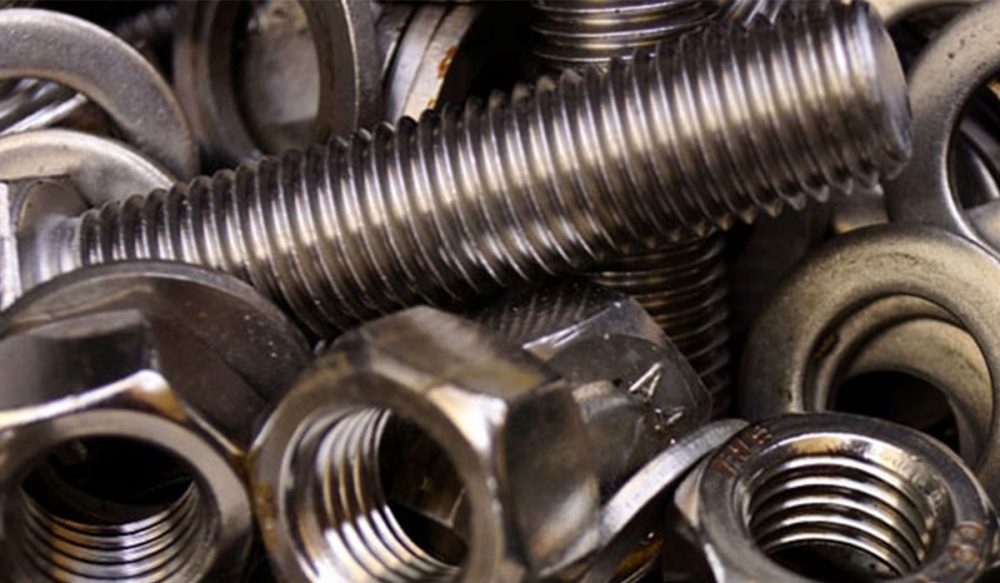Fasteners are universal components that help hold two or more materials together. They help create joints that are non-permanent. That is, the joint can be removed without causing any damage to the components that were used to join the materials together.
There are various Industrial Fasteners types. Common examples of types of fasteners are nuts, nails, bolts, washers, screws, studs, clamps, anchors, thread inserts, cable ties, pins, retaining rings, and key stock.

There are numerous uses of the fastener; from common everyday tasks to complex industrial uses. Fasteners can be used for chairs, automobile parts, boxes, bread clips, hi-tech equipment, and so on.
The global fasteners market size was approximately $84.75 billion in 2017 where the major market share was of North America followed by the Asia Pacific. At that time, North America’s market size for the fasteners was more than $20 billion and the market size of Asia Pacific was nearly $41 billion.
The global market was then predicted to increase to $95.24 billion by 2019 after which there was a prediction of further market growth. According to the 2020 market intelligence report by Beroe, the market of fasteners is likely to increase at a CAGR of up to 6%. Beroe predicts that by 2021, the market value for fasteners will be more than $110 billion.
APAC and Western Europe are considered medium and low market maturity regions for fasteners.
North America is considered as a high market maturity region. The buyer power has medium to high negotiation power in the market while the supplier has high negotiation power. There are three major end-users of fasteners; automotive sector, aerospace, and construction & MRO.
The automotive industry constitutes 27% of the demand, the aerospace industry has a demand of 18%, and the MRO/construction industry has a demand of 26%. The fastener industry has many top suppliers according to Beroe’s research which includes Alcoa, ITW, NIFCO, Stanley Black & Decker, LISI, and Precision Castparts Corp.
The top suppliers account for more than 13.5% of the global market share.
The rest of the market share is held by small and medium-sized manufacturers. When it comes to the cost of the fasteners then two cost components matter the most; the raw material cost and labor costs.
While the raw material cost can contribute anywhere between 60% and 70% of the cost, the labor costs can contribute anything from 15% to 20% of the cost. The fasteners market is one where high investment is required.
This is why domestic manufacturers of fasteners have a tough time competing with the imported fasteners.
It is imperative to understand the fastener trends when one is talking about the market. As applications are evolving at faster rates than ever before, many manufacturers are focusing on new types of solutions for assembly. This has led to the introduction of a new type of fasteners that will have a particular functional permanence. Another trend is that in the electronics industry, the capability of surface mounting has been enhanced. Smaller parts are making big waves and fasteners that come in small packages are being preferred. These can be used in the aerospace industry among others. Technology surrounding fasteners is evolving at a rapid pace too.
The demand of the fasteners market is going to increase in the future. Beroe predicts that APAC will be the largest contributor to the market for fasteners. The APAC region will see a push in the construction activities along with industrial activities which will increase the demand for the metal. In turn, this will help boost the fastener market even further. APAC is going to have a growth in demand for automobiles which will help increase the demand for fasteners in that region. Industrialization and urbanization are contributors to the high demand for fasteners in these emerging regions. Moreover, an increase in the heavy engineering market is going to take place which will push the demand for fasteners higher.
There are a few main APAC regions through which demand is going to be significant for the market of fasteners. These regions are Brazil, India, Thailand, Saudi Arabia, China, and South Korea. The developed regions such as North America and Europe are likely to witness a demand growth as well for aerospace-grade fasteners. However, there are a few constraints that can slow down the growth. The main one is an increase in commodity prices which are expected in the coming years. In addition, the other constraint is that substitutes can lower fasteners’ demand. For manufacturers, one of the constraints is the increasing labor costs which can drive up the total cost.

